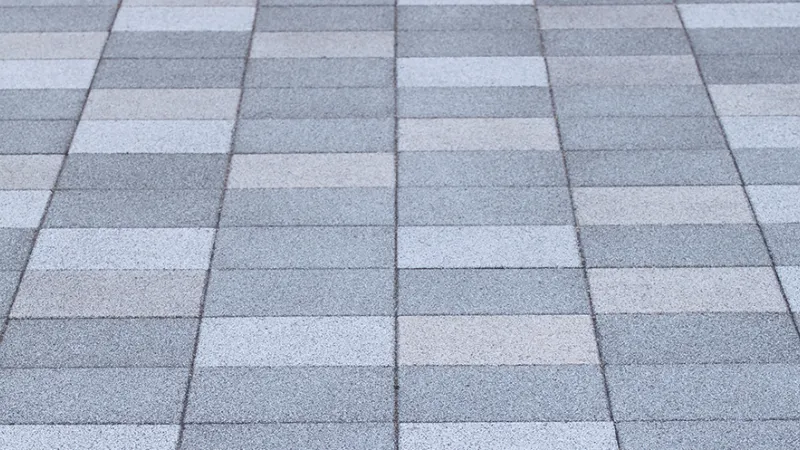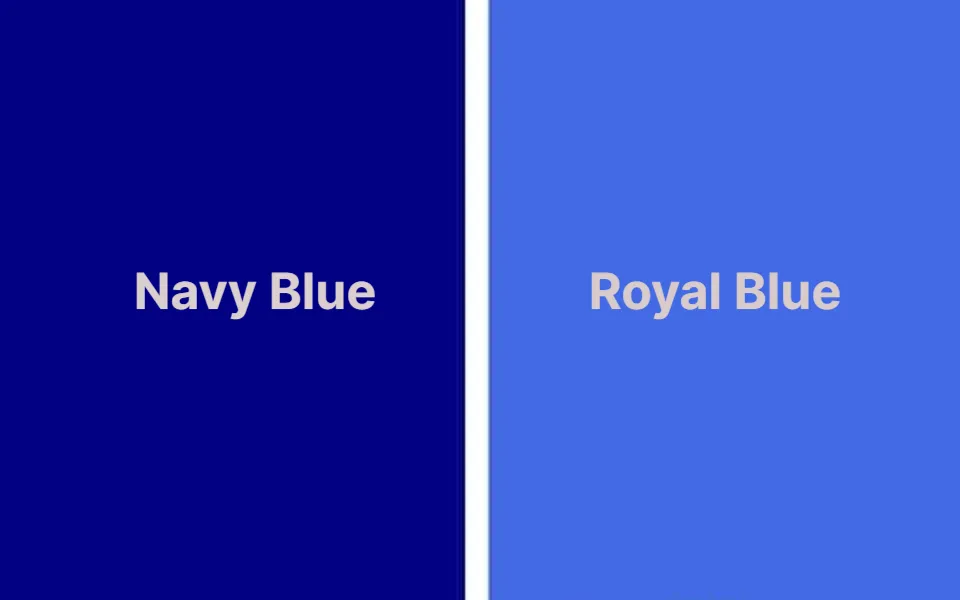“How to choose the right grout color for your tile” It’s a question I hear all the time. The short answer is that there aren’t any set rules, but there are some general principles that can help you make decisions you won’t regret.
You need to consider the size of your space, tile location, design complexity, patterns, surrounding interior decor, multicolored tile, tile edges, playful grout lines, grout joint size, tile shape, and tile finish.
Please read on to find more detailed information.
Choose the Right Grout Color for Your Tile – Grout Considerations
All of these elements may have an impact on how your tile design is impacted by the color of your grout.
Consider the Size of Your Space
Here’s a good rule of thumb for choosing grout color: if you want your space to feel larger, pick a grout color that complements your tile.
A white grout, for instance, will open up the space and make the room feel larger if you choose white tile for the bathroom. When working with floor tiles, picking grout that matches the color of the tile results in uninterrupted lines that feel wide-open and expansive.
The seamless blending of your tile and grout color results in clean lines and gives the space a light, airy feel.
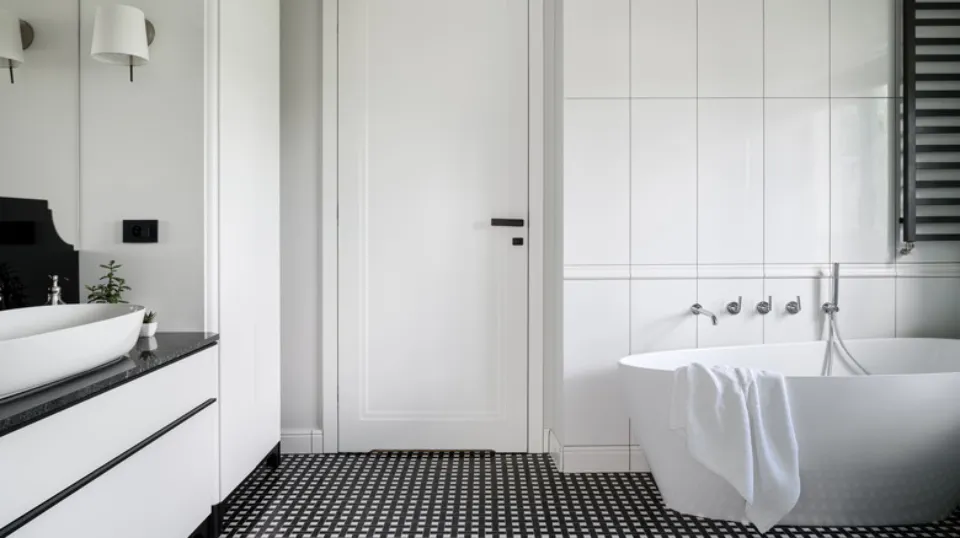
Tile Location
Your choice of grout may be influenced by where you place your tiles.
In contrast to some floor areas, backsplash and wall tiles may be directly in your line of sight, making your choice of grout color more obvious. Furthermore, in a big space, a strong grout color contrast can be too much.
Suggested reading: Does Lowe’s sell Benjamin Moore Paint? Are you wondering if you can buy Benjamin Moore paint at Lowe’s? Is it simple to use and reasonably priced? If so, you’ve arrived at the appropriate location!
Design Complexity
While the size and location of your tile impacts the tile installation design, your grout color choice gives you the opportunity to influence your design complexity in any space.
Remember these rules of thumb:
- You can achieve a minimalist appearance with grout lines that blend into the background by matching the colors of the tile and grout.
- Using contrasting colors for your tile and grout make for a more dynamic design.
- Pair your tile with a neutral grout color that is mid-toned, like gray, for a look that blurs the lines.
Patterns
Since the seams between tiles don’t contribute to the desired pattern in some situations, it’s nice to be able to hide the shape of your tile. But some tiles are meant to be boldly outlined. When highlighted, certain tile patterns appear better. Use contrasting grout to make intricate tiles that don’t have simple square or straight line layouts stand out. Light-colored tiles with dark grout or dark-colored tiles with light grout are two examples of this.
The choice to use high contrast tile and grout combinations can change the look of your tile. This method can be applied to accent a mosaic’s pattern or bring out certain colors in an accent tile. By highlighting the shapes in the design and drawing the eye to the tile outlines, this will make your tile layout pattern stand out. High-contrast tile and grout combinations will enhance a statement wall or a vibrant backsplash.
Suggested reading: What color grout to use with gray tile? Overall, some colored grout contrasts with gray tiles: light gray, off white, taupe, brown, charcoal gray, cream, dark gray, and gray porcelain.
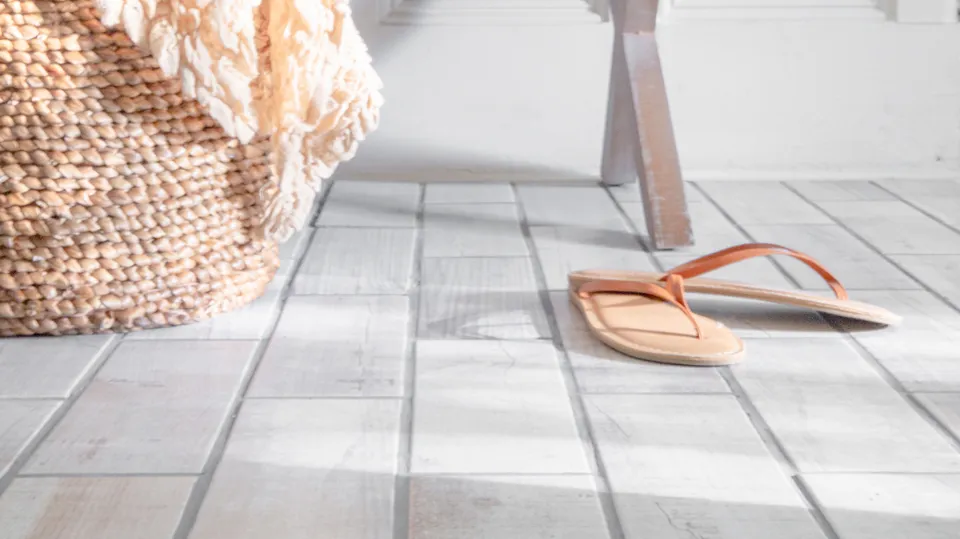
Surrounding Interior Decor
It goes without saying that your grout should match the color of your tiles, but don’t forget about the rest of your interior design.
If the grout color matches the room’s other tones, it might appear less striking. For instance, grout with brown or red undertones can blend in well with the nearby wood, brick, stone, and leather.
Ask your contractor or designer for grout swatches (yes, just like with paint colors) to compare to the other colors in your space before deciding on a specific grout color.
Suggested reading: One of the best ways to quickly improve the appearance and ambiance of a space where you probably spend a lot of time is by updating your kitchen cabinets. So, how much does it cost to paint kitchen cabinets?
Multicolored Tile
Multicolored tile may seem particularly tricky to choose a grout color for, but you actually have several appealing options:
- To ensure that the grout will work well with your application, match it with one of the colors (start with the most neutral color).
- Choose a grout color that contrasts well with every hue in your tile installation by being sufficiently light or dark. (If none of the tile colors are extremely dark or light, this option works well.)
- In order to avoid disrupting the pattern of patterned tile, choose a grout color that as closely matches the tile’s edges as you can.
- You have the option of matching the grout color with the base color of the tile or with the veining if the tile has a veined stone-look design.
Suggested reading: Off White color combines white with a trace of brown. It exudes an air of refinement, elegance, and regality. In designs where a more subdued aesthetic is desired, off white is used instead of pure white.
Tile Edges
With the tile edge treatment known as “rectification,” tiles are cut to a more precise size, producing sharp tile edges. Rectified tiles can frequently be installed more closely together than non-rectified tiles and can sometimes have more narrow grout lines because they have more precise dimensions.
Wider grout joints can be used to create a more uniform appearance because nonrectified tiles typically have more size variation.
There is no superior tile edge type, so think about the style you want for your tile, the size of your preferred grout lines, and what the manufacturer suggests. Whether you select rectified or unrectified tile edges, the grout color you choose will influence how noticeable the grout lines are.
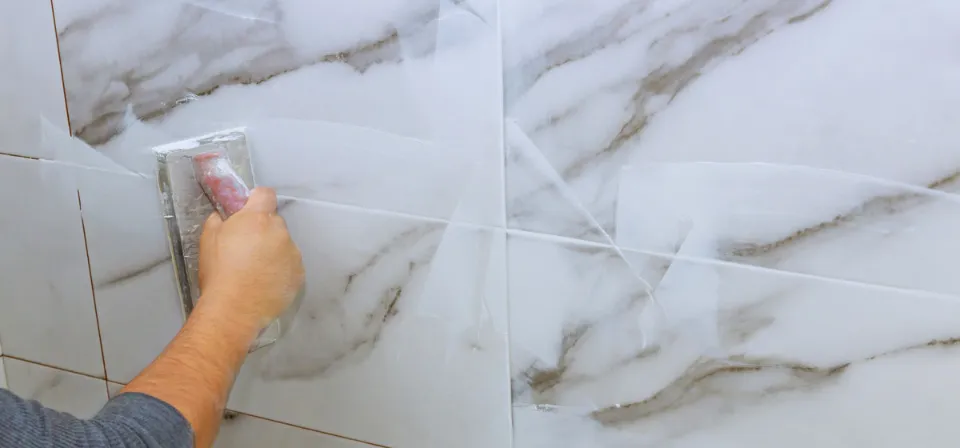
Playful Grout Lines
You can experiment with the consistency of the grout lines in addition to the tile edges. Particularly curved tile shapes offer the chance for distinctive grout lines with different thicknesses throughout.
Grout Joint Size
There is no “standard” joint width for tile installations. Depending on the manufacturer’s recommendations and the desired effect, joint width can change.
Be aware that the grout joint’s size isn’t always a matter of taste. Installation methods allow for an acceptable joint width range dependent on the tile application, type and size of tile, and type of grout being used. To determine the range appropriate for the appearance you desire, your installer should consult the manufacturer’s specifications for the tile and grout being used.
Joint size and grout color go hand in hand: While thin joints in a color that matches the tile may seem to disappear, thick joints in a contrasting color make a bold statement.
Tile Shape
Tile shape may also affect grout size.
In contrast to rectangular or square tile, circular tile, such as penny round tile, requires larger areas of grout, which makes the grout more visible. The best option is to have the tile and grout colors match nearly exactly if you want the tile to draw attention rather than the grout.
Tile Finish
Glossy tile, like iridescent tile, high-sheen tile, and mirror tile, reflect light, making it appear lighter in your space than it does in a sample. Keep this in mind when choosing a grout color and consider shades in a lighter color than you might otherwise choose.
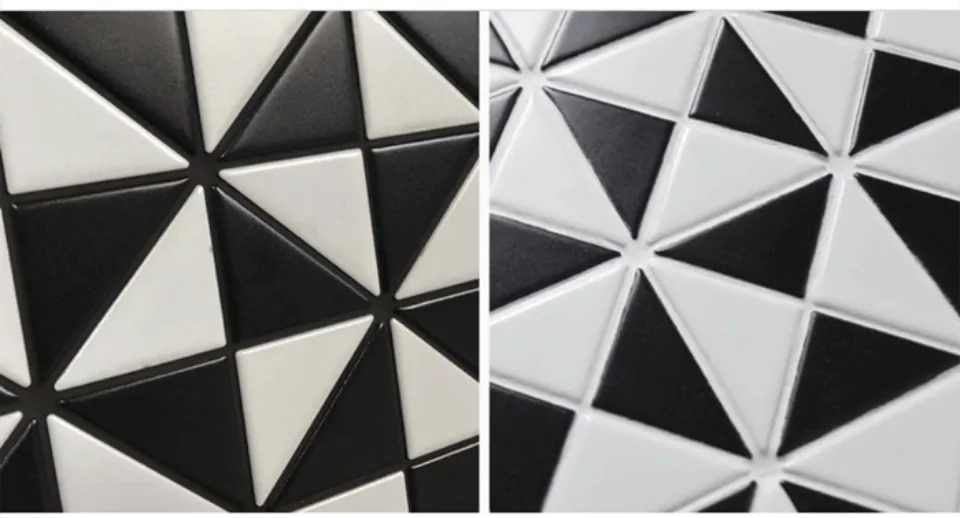
Should Grout Color and Tile Color Be the Same?
You are not required to choose grout that goes with your tiles. In fact, finding an exact match can be challenging. Depending on the amount of water used, how long the grout needs to cure, and other factors, the color of a grout that needs water addition can be impacted. Therefore, there is a chance that the color won’t exactly match your expectations.
Instead of relying on the color depicted on the packaging or the grout itself to get a close match, examine grout samples.
The coloring of epoxy and urethane grouts is more uniform.
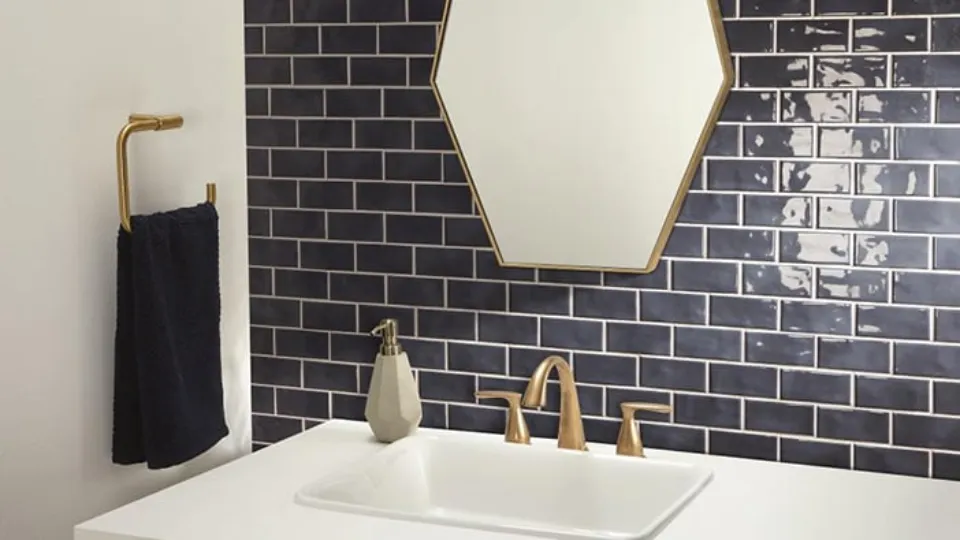
Should Grout Be Darker Or Lighter Than the Tile?
A variegated tile with different shades gives you a variety of grout color options, though this is somewhat a matter of taste. Choosing lighter colors blends your design together. A more dramatic effect is produced by darker hues.
What you want to achieve with your design will influence the color you choose. If you want to highlight the pattern your tile creates, a contrasting color is best.
If you’re trying to unify your tile, such as with a wood look tile floor, go for a close match that’s a little bit lighter than your tile.
If you want to highlight a color or accent in your tile, like the gray veins in a marble tile, go for a close match, or a bit darker than that shade in your tile.
Particularly in areas with a lot of traffic, grout, especially grout made of cement, can turn dark over time. If you’re worried about how much traffic your floors will see, darker grout is a good idea.
You may also interested: What Color Grout To Use With Gray Tile?
Do Grout Stains Work? Should I Use a Sealer?
Grout stains are an excellent solution when your grout doesn’t come out as expected. They can make your grout darker or help the color blend. The majority of grout stains also serve as sealants to keep grout free from stains and discoloration.
All grout made of cement must be sealed, speaking of sealers. Epoxy and urethane grout doesn’t need to be sealed, but cement-based grouts are very porous and can easily be stained by spills or regular wear.
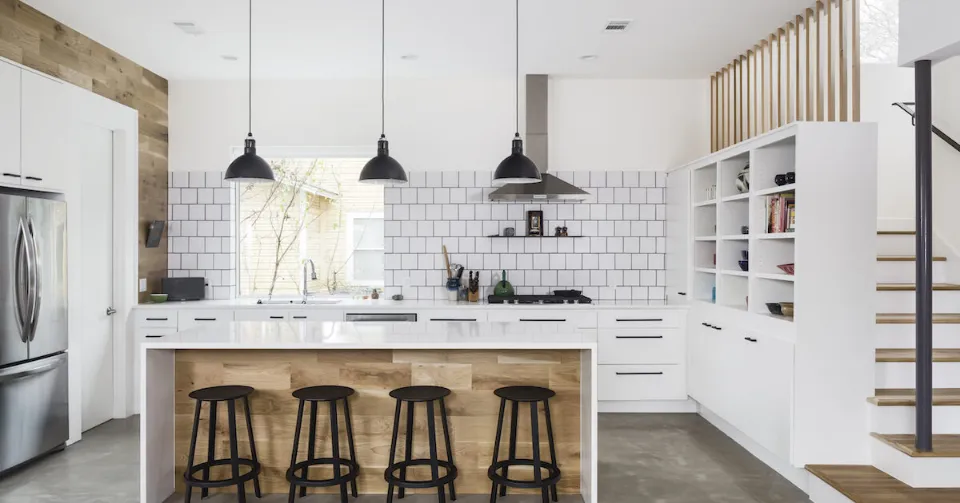
FAQs
Can Grout Be Darker Than Tile?
ProTip: If you want to create contrast, a good rule of thumb is to choose a grout that is several shades lighter or darker than the color of your tiles. Your space will have more pattern added to it the more starkly different the grout color you select.
Can Grout Be the Same Color as the Tile?
Your grout can be either lighter or darker than your tile — or the same color. It all depends on what you prefer.
Should I Use Light Or Dark Grout in the Bathroom?
Generally speaking, white or light grout isn’t as forgiving of discolorations and staining, and ends up requiring extra upkeep to make it look good. Darker grouts, on the other hand, can hide typical stains better, but they’re more likely to fade or stain from cleaners.
Does the Color of the Grout Matter?
There are a lot of options, and the color of your grout can significantly affect your overall design. Tile maintenance is significantly impacted by grout color as well. For instance, a darker grout color will conceal stains but may be susceptible to fading.
Summary: Choose a Color Combination That Fits Your Sensibilities
Your individual sense of style might get lost in the process because there are so many factors to take into account when choosing a grout-tile combination. Never feel compelled to choose a color before taking your personal preferences into consideration. You ought to pick a grout and tile combination that appeals to your sense of style, matches who you are, and gives you a feeling of comfort.
It’s a big decision to choose colors, so take your personal preferences into account. Although it’s crucial to be aware of all the possible pairings, color schemes, and explanations for why they might matter, design is ultimately a matter of taste, so knowing what you like is the most important consideration. Your tile will hopefully last years if not decades, so picking something you don’t like will annoy you for a long while. Make sure your color combination feels good to you because you’ll be the one living with it!
If you have any questions, please leave a comment. My Prime Home tries to give you the best home improvement information. Don’t forget to share the post. Thank you for reading.
